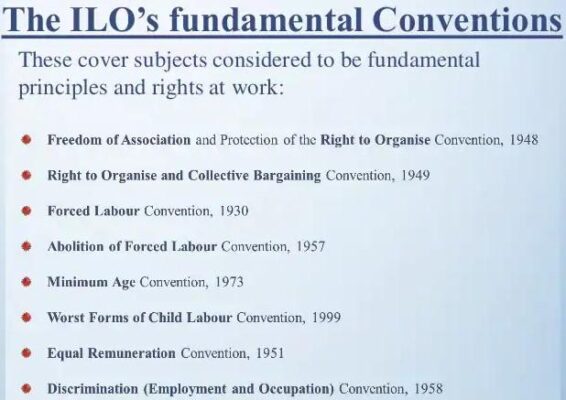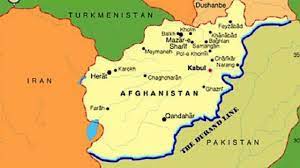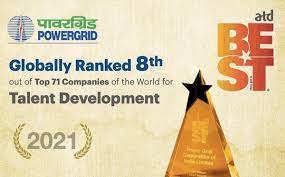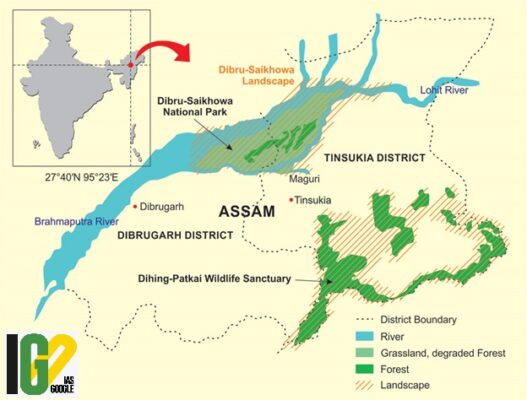- Home
- Prelims
- Mains
- Current Affairs
- Study Materials
- Test Series
05th Sep 2021
POSHAN MAAH 2021: ‘ESTABLISH NUTRITION GARDENS TO FIGHT MALNUTRITION,’ UNION MINISTER SMRITI IRANI URGES DISTRICTS
Union Minister for Women and Child Development has urged all state governments to ensure that all aspirational districts in India have a poshan vatika (nutrition garden) at anganwadi centres during the Nutrition Month which starts from September 1.
The Focus will be on three key areas – Poshan 2.0, Vatsalya mission and Shakti mission.
Poshan Vatika:







- All districts of the country have to establish a Poshan Vatika (nutrition garden). It is for the protection of Severe Actual Malnourished (SAM) children.
- Its main objective is to ensure supply of nutrition through organically home-grown vegetables and fruits simultaneously ensuring that the soil must also remain healthy.
- Plantation drives for Poshan Vatikas would be taken up by all the stakeholders in the space available at anganwadis, school premises and gram panchayats.
- Month of September is celebrated as POSHAN Maah since 2018 to improve nutritional outcomes for children, adolescent girls, pregnant women, and lactating mothers.
- It includes a month-long activity focused on antenatal care, optimal breastfeeding, Anaemia, growth monitoring, girls’ education, diet, right age of marriage, hygiene and sanitation and eating healthy.
- The activities focus on Social and Behavioral Change Communication (SBCC) and are based on Jan Andolan Guidelines.
- SBCC is the strategic use of communication approaches to promote changes in knowledge, attitudes, norms, beliefs and behaviors.
- An Assocham study revealed that a loss of 4 per cent GDP annually for the country due to malnutrition.
- Children suffering from malnutrition grow up and start earning, they earn 20 percent less than those who have had healthy childhoods.
- Covid-19 is pushing millions into poverty, disproportionately affecting the economically disadvantaged. Such people are vulnerable to malnutrition and food insecurities.
- Poshan Abhiyaan or National Nutrition Mission (NNM) was launched in 2018.
- Aim: To tackle the problem of malnutrition prevalent in India.
- Objective: To reduce the level of under-nutrition and enhance the nutritional status of children in the country.
- It is a multi-ministerial initiative and aims at removing malnutrition from the country by 2022.
- It focusses to improve the nutritional outcomes of adolescents, children, pregnant women and lactating mothers.
- The mission leverages technology and convergence between various modules and departments.
- The programme has specific targets for reducing stunting, anaemia, under-nutrition and low birth weight.
- For Anganwadi centres, the mission envisage:
- Giving incentives to Anganwadi Workers (AWWs) for using IT-based tools.
- Elimination of registers used by AWWs.
- Measuring the height of children at Anganwadi centres.

- 1 billion people (over half of all people in the world) were living without any social safety net of any kind.
- In 2020, only 46.9% of the global population benefitted from by at least one social protection benefit.
- Social protection includes access to health care and income security measures related especially to old age, unemployment, sickness, disability, work injury, maternity or the loss of the main breadwinner in a family, as well as extra support for families with children.
- Only 30.6% of the working-age population are legally covered by comprehensive social security systems.
- There are significant inequalities across and within regions:
- The coverage rates in Europe and Central Asia (83.9%) and the Americas (64.3%) are above the global average.
- Asia and the Pacific (44.1%), Arab States (40%) and Africa (17.4%) have far more marked coverage gaps.
- ILO was founded in October 1919 under the League of Nations.
- It is the first and oldest specialized agency of the UN.
- It is a member of United Nations Development Group, a coalition of UN organization aimed at helping meet the Sustainable Development Goals.
- Objective: To advance social and economic justice through setting international labour standards.
- The ILO's international labour standards are broadly aimed at:
- Ensuring accessible, productive, and sustainable work worldwide in conditions of freedom, equity, security and dignity.
- Effective recognition of the right to collective bargaining
- Elimination of forced or compulsory labour
- Abolition of child labour
- Elimination of discrimination in respect of employment and occupation
- Certain sections of the media communalised everything and this would ultimately result in giving the country a bad name.
- There is a lack of accountability on the part of social media platforms.
- The social media platforms only responded to powerful people, while complaints made by ordinary people, institutions and judges over content were ignored.
- Role of Media in promoting communal harmony:
- Media acts as a fourth pillar of the society. It reaches people widely and is the source of information for society regarding any issue be it local, regional or global.
- Media acts as an influential and instrumental tool with regards to building confidence or promoting mistrust among people on issues related to national security
- The primary responsibility of the Media is of creating an informed citizenry in order to empower society and strengthen democracy.
- It should play an active role in enhancing social, religious and communal harmony for the betterment of the community, the society and the nation.
- Adopt appropriate language to raise awareness: Increasing awareness will likely deter manipulative behaviours and increase pressure on platforms to take action.
- Creation of media evaluation tools: Media evaluation tools can provide information on media bias and news quality. Information on bias/quality can help citizens make informed news-related choices.
- Training journalists: Journalists could be trained to reduce instances of inadvertent amplification or manipulation.
- Transparency of social media platforms: Increasing the transparency of social media platforms and fixing accountability in case of manipulation.
- The Information Technology (Intermediary Guidelines and Digital Media Ethics Code) Rules, 2021, provide a redressal mechanism and timely resolution of grievances of users of social media and over-the-top platforms.
- The rules require these platforms to appoint a grievance redressal officer who is a resident of India.

- Around 30 per cent of the 557 raptor species around the world are threatened by extinction to some degree.
- Of them, 18 species are critically endangered, 25 are endangered, 57 are vulnerable and 66 are near-threatened.
- The Philippine eagle, the hooded vulture and the Annobon scops-owl were among the 166 species facing some degree of threat.
- The population of Philippine eagles, the largest variety of eagles in the world, decreased rapidly in the last decades due to extensive deforestation.
- The distribution range for each of the 557 species is identified based on richness, endemism, geographic spread, conservation status and population trends.
- Threats to the birds: habitat loss, pollution, human–wildlife conflicts and climate change.
- Raptors prey on a wide range of vertebrates and thus, facilitate long-distance seed dispersal. This indirectly increases seed production and pest control.
- Indonesia had the most raptor species, followed by Colombia, Ecuador and Peru.
- Some vulture populations have declined by over 95 per cent in Asian countries such as India because of the widespread use of diclofenac, a non-steroidal anti-inflammatory drug.
- Particularly West Africa, vulture populations have decreased by an average of 95 per cent in rural areas over the last 30 years.
- Threats: Shooting and poisoning through feeding on carcasses of livestock treated with diclofenac.
- The Annobon scops-owl was recently classified as ‘critically endangered’ because of rapid habitat loss and degradation.
- Population is fewer than 250 and it is restricted to Annobon Island off West Africa.

- The Durand Line is the international border between Afghanistan and Pakistan.
- It was fixed by British civil servant Sir Henry Mortimer Durand and the then Afghan Emir Abdur Rahman Khan in 1893.
- The length of the Durand Line is 2670 km. It is internationally recognised as the western border of Pakistan.
- It was established in order to fix the respective spheres of influence and also to improve the diplomatic ties between the British establishment in India and the Afghan Kingdom.
- The line cuts through the Pashtun homelands of the region. The line divides ethnic Pashtuns and Balochs, who live on both sides of the border.
- The borderline is deemed as one of the most dangerous in modern times. The ongoing conflict in the Waziristan region, located on the Pakistan side of the Durand Line, has become a hub of drug trafficking, kidnapping and general lawlessness.
- Pakistan started building a fence along the Durand Line in 2017.
- The $500 million fencing is two sets of chain-link fences with a 6-ft gap, filled with concertina wire coils.
- It is 11.6 ft high on the Pakistani side, and 13 ft on the Afghan side.
- It is fitted with surveillance cameras and infrared detectors, and punctuated by 1,000 watchtowers.
- Cross-border movement will only be allowed through 16 formally designated points after the completion of the project.
- Pakistan believes that in the new situation in Afghanistan, the fence will help control any spillover from unrest and chaos there.
- ‘Panj Piare’ is not just a group of five baptised people but a concept and tradition founded by 10th Sikh Guru Gobind Singh.
- Guru Gobind Singh established the institution of Panj Piare while founding the Khalsa on the day of Baisakhi in 1699.
- Addressing a large gathering, he asked for five heads for sacrifice. Five men responded to his call and the Guru baptised them and called them Panj Piare.
- Since then, every group of five baptised Sikhs is called Panj Piare and accorded the respect enjoyed by the first five Sikhs.
- Guru Gobind Singh himself got baptised from them at the same stage to tell the Sikhs that Panj Piaras have higher authority and decision making power than anyone in the community.
- The Panj Piare are also seen as a manifestation of the Guru himself.
- The Panj Piare were from different castes and states of India.
- Bhai Daya Ram hailed from Lahore, Bhai Dharam Rai was from Hastinapur in Uttar Pradesh, Bhai Himmat Rai came from Jagannath in Odisha, Bhai Mohkam Rai from Gujarat and Bhai Sahib Chand was from Bidar, Karnataka.
- In return, Guru Gobind Singh made them drink Amrit (sweet water prepared by reciting Gurbani) from one utensil.
- Then he suffixed Singh with their names and renamed them with prefix- Bhai.
- Any baptised Sikh can become a Panj Piare.
- The unanimous decision taken by Panj Piare has to be followed by everyone in the community.
- Akal Takht Jathedar also can’t take any decision unilaterally and every diktat from the Akal Takht has to be signed by all the five Jathedars of the five Takhts (Temporal seats) or their representatives.
Blue straggler:

- Blue stragglers are a class of stars on open or globular clusters that are bigger and bluer than the rest of the stars at the main sequence turnoff point for the cluster.
- Main sequence is the stage where a star spends most of its existence.
- The turnoff point for a star refers to the point where it leaves the main sequence after the exhaustion of its main fuel.
- Blue stragglers were first discovered by Allan Sandage in 1953 while performing photometry of the stars.
Genesis:

- A bunch of stars born at the same time from the same cloud form a star cluster. As time passes, each star evolves differently depending on its mass.
- The most massive and bright stars evolve and move off the main sequence creating a bend in their track, known as the turnoff.
- Stars above this bend or brighter and hotter stars are not expected in a cluster, as they leave the main sequence to become red giants.
- But in 1953, it was found that some stars seem to be hotter than the turnoff of the parent cluster. These stars present in the clusters were straggling above the turnoff and termed Blue Stragglers.
- The only probable way these stars can still be present in these clusters is if they have somehow acquired extra mass along the way while on the main sequence.
Highlights:
- The researchers compared the mass of blue stragglers to the mass of turnoff stars (which are the most massive ‘normal’ stars in the cluster) and predicted the formation mechanisms of blue stragglers.
- Blue stragglers stars are primarily present in the older and massive star clusters. Due to their large mass, they are segregated towards the centre of the clusters.
- Half of the blue stragglers in their sample are formed through mass transfer from a close binary companion star.
- One third are likely formed through collisions of two stars.
- Remaining are formed through interactions of more than two stars.
Facts:
- The main sequence is the stage where a star spends most of its existence. Relative to other stages in a star's life, main sequence stage is extremely long.
- Our Sun took about 20 million years to form but will spend about 10 billion years as a main sequence star before evolving into a red giant.

- POWERGRID has won this for its diligent efforts in talent development practices and programmes driven by POWERGRID Academy of Leadership (PAL).
- It secured 8th rank among the 71 organizations from around the globe.
- It became the only PSU to win this award and one of the only two companies of India in Top 20.
Association for Talent Development:
- The Association for Talent Development (ATD, formerly ASTD) is the world's largest association dedicated to those who develop talent in organizations.
- The global program recognizes organizations that demonstrate enterprise-wide success through talent development.
- ATD’s BEST Award is the talent development industry’s most rigorous and coveted recognition.
Genesis:

- The Managing Director of Oil India Limited is allegedly responsible for the fire and destruction caused by Baghjan oil well fire in 2020.
- Committee will begin its work and submit an interim report within a month on the remedial compensation OIL ought to pay.
- SC directed OIL to pay for the committee’s expenses.
- The environment ministry will appoint a nodal officer to facilitate the committee and monitor its logistical arrangements.
Highlights:
- The decision is taken in the light of the several changes that have taken place in the media eco space.
- It includes the loss of large number of journalists due to COVID-19 and the broad basing of the definition of the “Working Journalists”.
- The Ministry of Information and Broadcasting granted ex-gratia payment to the families of journalists who unfortunately died due to COVID-19.
- Assistance has been given in over 100 cases @ Rs.5 lakh
- The Committee is expected to give its report in a time-bound manner within two months.









 Latest News
Latest News
 General Studies
General Studies